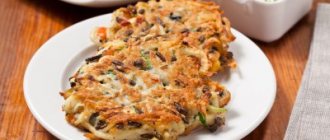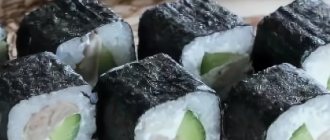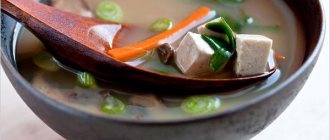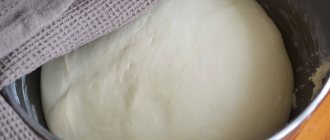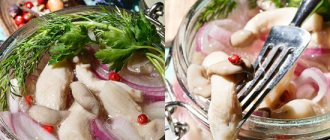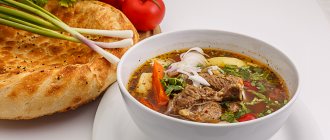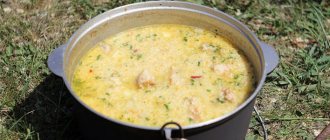In fact, Koreans, like representatives of most other nationalities, attach great importance to food culture. Although Korean traditional food itself is considered quite simple and is not divided into festive and everyday. It is based on rice, meat and seafood with vegetables and herbs.
Main courses are always served with a variety of snacks called panjan. For example, no self-respecting Korean will start a meal if there is no kimchi on the table - sauerkraut (or other vegetables) with red pepper. Among flavoring additives and seasonings, Koreans prefer pepper (both red and black), as well as soy sauce and vegetable sesame oil. Any foreigner will find most dishes too hot, but if you show your displeasure, you risk offending the owner.
The dish that many people associate primarily with Korean cuisine is bibimbal. This is rice cooked with pieces of seafood or meat, vegetables, hot sauce and an egg (fried or even raw). All this must be mixed immediately before use.
An analogue of our kebab is bulgogi. Before frying, the meat is marinated in soy sauce, garlic, pepper and sesame oil. According to tradition, all guests or visitors to the restaurant can take part in its preparation.
A snack without which any delicacy for a Korean would not be a joy – kimchi. This is sauerkraut (less often radishes or cucumbers), generously seasoned with red pepper.
Korean dumplings - mantu. For the filling you can choose meat, fish and seafood, or vegetables. The method of preparation also varies - they can be boiled, fried, or steamed.
And again, an analogy with the cuisine of another nation - Korean kimbal rolls. The difference is that the traditional filling is not raw fish, as in Japan, but various vegetables or scrambled eggs. Koreans prefer sesame oil instead of soy sauce.
Another traditional Korean snack is chapae. These are noodles fried with pieces of meat and vegetables.
Toklogs are a kind of rice cakes. They are usually fried in spicy sauce.
Pork bacon, called samgyeopsal, is also usually cooked in front of guests at home or restaurant visitors. They are served with fresh salad or sesame leaves.
People in Korea also love soups. One of the most popular is yukkejang, a beef-based vegetable soup. It is also seasoned with black and red pepper, sesame oil and soy sauce.
Koreans' favorite alcoholic drink is soju. This is vodka based on grain or sweet potatoes.
Rice in Korean cuisine
As in the cuisines of neighboring peoples, the main food of Koreans is rice. For Koreans, it is an integral part of the table, like bread for many European peoples. Rice is served to everyone in a separate bowl, and the rest of the snacks (panchhan) are laid out in common plates.
In 1969, at the direction of the government of the Republic of Korea, every Wednesday and Saturday were declared “days without rice”: citizens were advised not to eat rice on these days and to eat more products made from wheat flour. Schools ensured that students took food from home not from rice, but from a mixture of rice with beans or barley. Even restaurants were subject to restrictions: they were required to exclude rice dishes from the menu.
In the 1970s, the Tongyilpyo rice variety was developed, with shorter grains, better quality, higher yields (30% higher), and resistance to insect pests and diseases. The authorities of the Republic of Korea promoted this variety for widespread use. After 1977, the Republic of Korea began to be completely self-sufficient in rice and even export it.
According to 1970 data, each South Korean ate 136.4 kg of rice per year. After this, per capita consumption of rice began to decline: in 2003 the figure dropped to 83.2 kg, in 2007 to 77 kg, and in 2014 to 65 kg; experts attribute this to the diversity of the Korean diet.
Serving
A traditional Korean table setting includes a large number of small cups filled with appetizers (panchchan). A clear order of serving dishes is observed, established several centuries ago during the Joseon Dynasty. According to him, food is divided into primary and secondary. Based on the number of snacks, it was possible to determine the circumstances of the meal: whether it was the arrival of a child in the family, an adult’s anniversary, or just a dinner with the family. And 12 appetizers were served in the so-called imperial meal.
Traditionally, Koreans eat with chopsticks (due to the relative rarity of bamboo on the Korean Peninsula, metal chopsticks are traditionally used [6]), but a spoon is also served with every dinner, since the menu of Korean cuisine proper includes many different soups. In Korean culture, a spoon is a symbol of life: if there are four children in a family, they say “four mouths” in Russian, and “four spoons” in Korean. They say about the deceased “he laid down his spoon.”
Side dishes
The best side dishes for Korean dishes are rice and ramen noodles. They provide the body with enough carbohydrates and at the same time do not contain many calories. Both rice and noodles are used in complex salads in combination with vegetables, fish and meat; in soups. Moreover, freeze-dried instant noodles are perfect for preparing authentic dishes.
Korean recipes are simple and wise: simple and healthy food, seasoned with spices. However, if you cannot tolerate too spicy food, this is not a reason to refuse Korean dishes. Just reduce the amount of spices.
Meat
Korean recipes at home would be incomplete without meat dishes. Koreans especially love beef and pork, but you can vary and adapt the original recipes for other types of meat. For the preparation of many (if not all) dishes, marinades with a complex composition are actively used:
- lemon juice;
- grapefruit, orange;
- apples and pears;
- soy sauce;
- honey;
- ginger and other spices.
It is the marinade that makes the meat tender and melting in your mouth. Quite a lot of Russian residents have appreciated the taste of Kalbi ribs and Bulgogi pork in Korean restaurants. But it’s much more interesting to cook them yourself, surprising your guests with an unexpected flavor!
Peculiarities
Residents of Europe are surprised by the originality of Asian food. Korea was subject to various outside influences. Incoming religions, along with alternating rulers and the formation of trade relations, made a significant contribution to the maturation of local traditions. The main courses were not always spicy. Hot spices were brought here at the end of the 16th century and became firmly entrenched in everyday life.
The ingredients used by contemporaries are simple. The basis of the diet is rice, vegetables, meat. The main principle of eating is a healthy lifestyle. And here the gastronomic delights of a small state in the very east of Asia are in no way inferior in quality to the recipes of the Celestial Empire.


